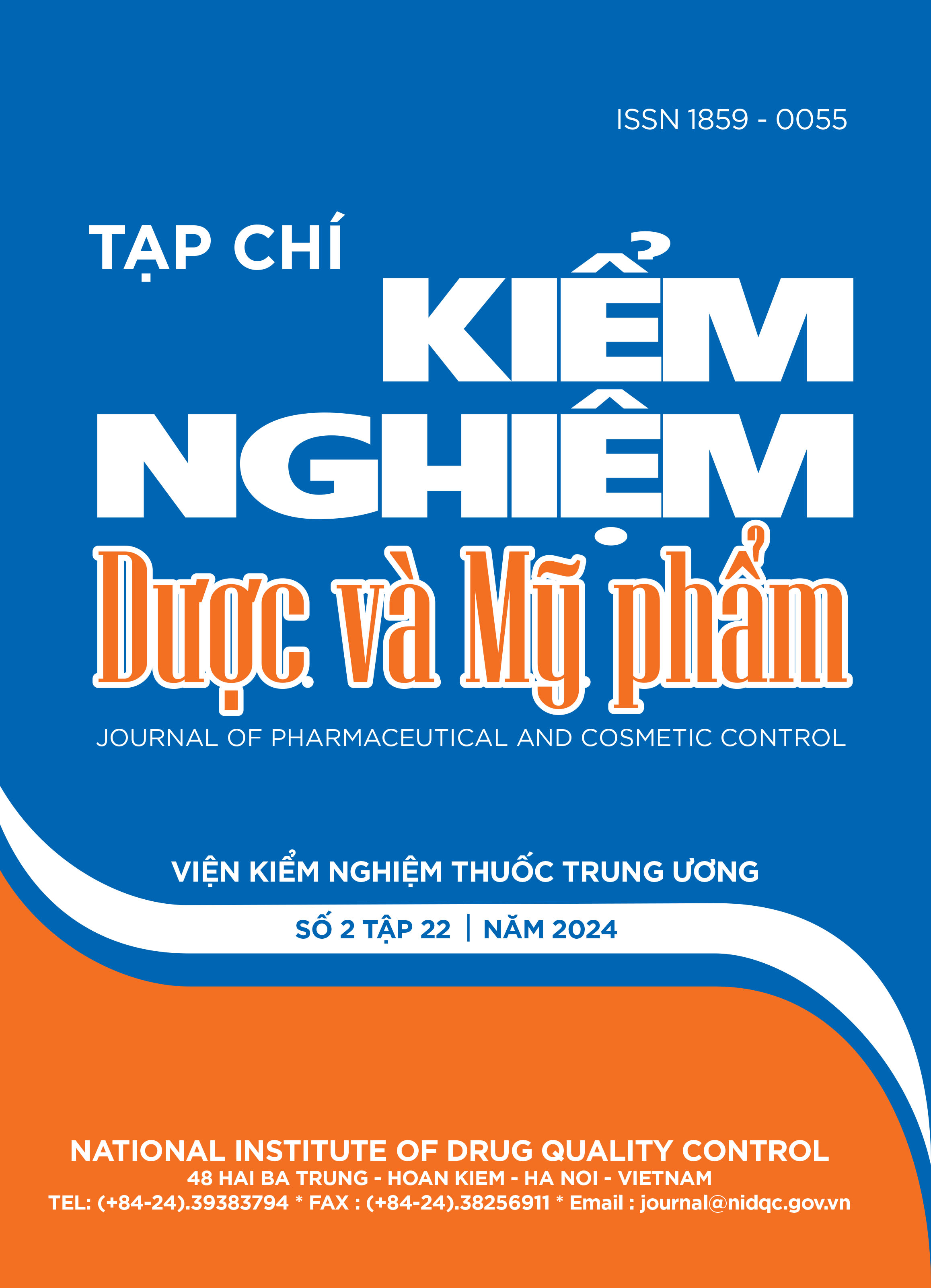Developing the method for simultaneous determination of crocin I, picrocrocin and safranal in Stigmas of Crocus sativus L.
Main Article Content
Abstract
Stigmas of Crocus sativus L. (Iridaceae), also known as saffron, is a very famous spice in the world and has many biological effects. Crocin I, picrocrocin and safranal are the main compounds that determine the quality and value of saffron. The aim of the research developed the method to determine the amount of crocin I, picrocrocin, and safranal in saffron using high performance liquid chromatography (HPLC) with PDA detector. The results showed extraction conditions, also HPLC coditions to quantify three markers. The method was validated about the specificity, prescision, accuracy, linear range of picrocrocin, crocin I, safranal respectively was 125 - 350 µg/ml; 250 - 600 µg/ml; 0,5 - 2,0 µg/ml.
Article Details
Keywords
saffron, Crocus sativus L., picrocrocin, crocin I, safranal, HPLC
References
2. Kothari D., Thakur R., Kumar R., (2021), Saffron (Crocus sativus L.): gold of the spices - a comprehensive review, Horticulture, Environment, and Biotechnology, 62, pp. 661-677, 2021.
3. Tabtabaei S., et al, (2019), Geographical classification of Iranian and Italian saffron sources based on HPLC analysis and UV-Vis spectra of aqueous extracts, European Food Research and Technology, 245, pp. 2435-2446.
4. Sabatino L., et al, (2011), HPLC/PDA/ESI-MS Evaluation of Saffron (Crocus sativus L.) Adulteration, Natural Product Communications, 6(12), pp. 1873-1876.
5. Chu Đức Hà, Lê Bá Ngọc, Lê Tiến Dũng (2018), Saffron - Loại gia vị quý và tiềm năng phát triển ở Việt Nam, Tạp chí Khoa học & Công nghệ Việt Nam, 5(1), tr. 72-75.
6. Caballero-Ortega H., Pereda-Miranda R., Abdullaev FI., (2007), HPLC quantification of major active components from 11 different saffron (Crocus sativus L.) sources, Food Chemistry, 100, pp. 1126–1131.
7. Mottaghipisheh J., et al, (2020), Comprehensive chemotaxonomic analysis of saffron crocus tepal and stamen samples, as raw materials with potential antidepressant activity, Journal of Pharmaceutical and Biomedical Analysis, 184, 113183.
8. Vahedi M., Rezadoost H., et al, (2018), Quantitative HPLC-based metabolomics of some Iranian saffron (Crocus sativus L.) accessions, Industrial Crops & Products, 118, pp. 26-29.
9. Hadizadeh F., et al, (2007), Evaluation of ISO Method in Saffron Qualification, Acta Horticulturae, 739, pp. 405-410.


